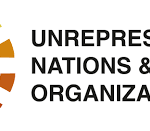Al Arabiya with Agencies
Israeli Defense Minister Ehud Barak on Sunday warned the six-power group negotiating with Iran to set stringent
limits on its nuclear enrichment at forthcoming talks. “If the P5+1 will set a much lower threshold, like just stop reaching 20 percent it means that basically the Iranians at a very cheap cost bought their way into continuing their military programs, slightly slower but without sanctions,” Barak said in an interview aired on Sunday by CNN. “That would be a total change of direction for the worse,” he added. The so-called P5+1, comprising the five permanent members of the U.N. Security Council plus Germany, is scheduled to begin talks with Iran in coming weeks, though no date has been set and Tehran has rejected at least one proposed venue. On Sunday, Iran’s English-language Press TV reported, citing unnamed sources, that Istanbul will host the next round of nuclear talks between Iran and world powers. Iran’s Fars news agency said the sides had also agreed to hold a second round of talks in the Iraqi capital Baghdad if they made progress in Turkey. There was no immediate comment from the world powers – the United States, Britain, France, Russia, China and Germany. Meanwhile, Israeli Prime Minister Benjamin Netanyahu last month set three “benchmarks” for a peaceful settlement of the Iran nuclear issue: That the Islamic republic dismantle its underground nuclear facility in Qom, stop uranium enrichment and get rid of all enriched material in Iran beyond what would allow it to make medical isotopes or generate nuclear power. “And when I say all the material, I mean all the material, from 3.5 percent up,” Netanyahu said, during a March 2 visit to Ottawa on his way to meet U.S. President Barack Obama in Washington. The New York Times reported late Saturday that the United States and its European allies plan to demand the immediate closing and ultimate dismantling of the Qom plant, a halt in the production of uranium fuel that is considered just a few steps from bomb grade, and the shipment of existing stockpiles of that fuel out of the country. “Mr. Obama and his allies are gambling that crushing sanctions and the threat of Israeli military action will bolster the arguments of those Iranians who say a negotiated settlement is far preferable to isolation and more financial hardship,” The Times wrote. The Obama administration says it does not believe Iran has taken a decision to develop a nuclear weapon, or that the time is right for military action, preferring to give sanctions time to work. But Israel, which sees a possible Iranian nuclear weapon as a threat to its very existence, claims Iran may be on the cusp of “breakout” capability ̶ when it could quickly build a nuclear weapon ̶ and it does not rule out staging a pre-emptive strike of its own. Iran last held talks with the six powers in January 2011 with no results. Obama has told Iran the United States would accept Tehran having a civilian nuclear program if the Islamic state can prove it is not seeking atomic weapons, The Washington Post said Friday. Obama sent such a message to Tehran via Turkish Prime Minister Recep Tayyip Erdogan, who delivered it to Iran’s Supreme leader Ali Khamenei last week, said the newspaper’s foreign affairs columnist David Ignatius.
Israel’s growing suspicion over Iran
An Israeli official says a prominent Iranian lawmaker’s claim that Tehran has the knowledge and scientific capability to produce atomic weapons reinforces Israel’s view that the Islamic Republic’s disputed nuclear program has a military dimension.
He spoke on condition of anonymity because of the sensitivity of the matter.
Iranian lawmaker Gholamreza Mesbahi Moghadam’s comment on the Iranian parliament’s website late Friday was the first time a prominent Iranian politician has publicly stated that Tehran has the capability to build a nuclear bomb.
New intelligence boosts U.S. confidence
A stealth surveillance drone operated by the CIA penetrated deep inside Iran over three years ago, snapped images of Iran’s secret nuclear facility at Qom and returned home, The Washington Post reported late Saturday.
The newspaper said that during that flight, analysts at the Central Intelligence Agency and other agencies watched carefully for any sign that the aircraft, called the RQ-170 Sentinel, had been detected by Tehran’s air defenses on its maiden voyage.
“There was never even a ripple,” the paper quotes an unnamed former senior U.S. intelligence official as saying.
CIA stealth drones scoured dozens of sites throughout Iran, making hundreds of passes over suspicious facilities, before a version of the RQ-170 crashed inside Iran’s borders in December, the report said.
The surveillance has been part of an intelligence surge that is aimed at Iran’s nuclear program and that has been gaining momentum since the final years of George W. Bush’s administration, The Post noted.
The effort has included eavesdropping by the National Security Agency, the formation of an Iran task force among satellite-imagery analysts, as well as an expanded network of spies, the paper added.
The expanded intelligence collection has reinforced the view within the White House that it will have early warning of any move by Iran to assemble a nuclear bomb, the report said.
“There is confidence that we would see activity indicating that a decision had been made,” The Post quoted a senior U.S. official as saying. “Across the board, our access has been significantly improved.”
According to the paper, the expanded intelligence effort has coincided with a covert campaign by the CIA and other agencies to sabotage Iran’s nuclear program.
Obama’s administration has cited new intelligence reports in arguing against a preemptive military strike by Israel against Iranian nuclear facilities.
















+ There are no comments
Add yours